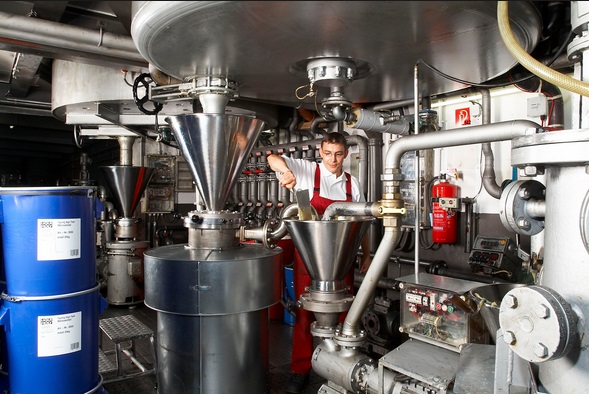Виды и назначение присадок к маслам
Дата публикации: .
Категория: Автотехника.
Двигатели внутреннего сгорания (ДВС) обладают определенными недостатками, главным из которых является низкий КПД, который не превышает 30% для бензиновых и 40% для дизельных моделей. Для повышения работоспособности мотора в системе автомобиля предусмотрена система охлаждения, которая позволяет снизить потери мощности из-за сгорания топлива. Немаловажную роль играет и моторное масло, которое необходимо регулярно заменять. Смазочные жидкости выполняют не только свою основную функцию (препятствуют трению деталей) но и позволяют увеличить ресурс мотора. Добиться этого удается за счет дополнительных компонентов в составе жидкости. Присадки – это вещества, позволяющие в разы усилить естественные функции базовых масел или придать им новые свойства.

Помимо присадок, входящих в состав смазочных составов, существуют дополнительные добавки. Почему же их не добавляют сразу во все моторные масла? Дело в том, что в готовой жидкости содержится оптимальное количество компонентов необходимых для полноценного функционирования систем. Но эти вещества не всегда «спасают» ситуацию. Если автомобиль уже повидал многое – то не будет лишним использовать, например, присадки для дизельного двигателя с большим пробегом. Если же автомобиль новый и все его системы работают стабильно, то обычного масла будет достаточно.
Чтобы разобраться с разнообразием присадок разберемся с их классификацией. Условно такие добавки можно разделить на защищающие детали двигателя и «реаниматоры».
Присадки для защиты двигателя
Эти дополнительные компоненты позволяют сохранить исходные свойства смазывающих жидкостей, облагораживают масла, препятствуя образованию коррозии, окисления, нагара и много другого. Также они позволяют менять вязкость состава и его температуру застывания. Рассмотрим эти классификации подробнее.
Антиокислительные
Эти присадки добавляются к трансформаторным, турбинным и аналогичным типам масел, которые подвергаются окислению. Благодаря использованию добавок вы сможете увеличить эксплуатационный срок смазывающего состава. Присутствие этих присадок также повышает термоокислительную стабильность жидкости.
Антикоррозионные
Присадки разработаны для масел, которые обладают коррелирующим свойством и накапливают большие объемы продуктов коррозии в процессе работы. Антикоррозионные присадки – это сульфид, алкилфенол, эфир фосфористой кислоты, окисленный петролатум и соли органических сульфокислот. Главным свойством присадок этого класса является образование на металлических частях и поверхностях системы специальной защитной пленки.
Также стоит знать, что некоторые антиокислительные присадки, такие как ДФ 11 обладают такими же свойствами благодаря сере и фосфору, поэтому лучше такие компоненты не смешивать.
Моющие, антинагарные и дисперсные
Эта группа присадок снижает образование нагара и осадков, которые появляются в процессе эксплуатации масла. Добавки представляют собой соли щелочноземельных металлов, которые содержат кислые полярные группы. В зависимости от содержащегося количества металла дисперсные присадки делятся на слабощелочные и высокощелочные.
Основным свойством этих компонентов является возможность удержания мелкодисперсных твердых частиц в подвешенном состоянии. Также моющие присадки не позволяют крупным компонентам укрупняться и задерживаться на твердых поверхностях.
Депрессорные
Эти присадки снижают вязкость смазывающей жидкости, а также температуру застывания масла. Благодаря этому увеличивается прокачиваемость масла при низкой температуре. Благодаря входящим в состав добавки смесям жирных синтетических спиртов С12-С18 удается значительно улучшить свойства вязкости жидкости и снизить порог застывания на 20 и даже 30 градусов.
Имейте ввиду что некоторые депрессорные присадки, например, АзНИИ ЦИАТИМ 1 обладают также моющими и антикоррозийными свойствами.
Противозадирные
Противозадирными называются противоизносные присадки в масло, которые используются если детали автомобиля и его механизмы испытывают повышенное давление (задир). Эти добавки повышают смазывающие свойства масла. Поэтому противозадирные присадки также добавляются в трансмиссионные масла.
В качестве основного компонента добавок используются высшие жирные кислоты, например, олеиновая, стеариновая, пальмитиновая и прочие.
Вязкостные
Присадки этого типа позволяют повысить вязкость масла при высоких температурах, не меняя свойств жидкости в холодное время. Обычно эти добавки представляют собой полимерные вещества с хорошей вязкостью. К этим компонентам можно отнести полиизобутилен и полиметакрилат.
Противопенные
Антиокислительные, моющие и многие другие присадки могут привести к повышенному пенообразованию. Также такая проблема появляется в результате контакта масла с воздухом (обычно это происходит при переливе смазывающей жидкости). Противопенные присадки предупреждают «ненужные» образования, но при этом также разрушают воздушно-масляную коллоидную систему. В результате их использования защитный слой, образовавшийся на поверхностях механизмов, может быть поврежден, поэтому использовать такие компоненты необходимо с осторожностью.
Это основные присадки, позволяющие улучшить свойства масел, но, существуют компоненты, которые позволяют в некоторой степени «реанимировать» мотор и снизить расход топлива.
Восстанавливающие компоненты
Сразу стоит сказать что восстанавливающие присадки в двигатель это не панацея, и «убитый» мотор с их помощью не исправить, так же как и образовавшиеся течи и прочие повреждения.
Присадки для увеличения компрессии двигателя изготавливаются на разной основе, поэтому они делятся на две категории:
- Реметаллизаторы (добавки, изготовленные на металлоплакирующей основе). Эти присадки создают дополнительный защитный плакирующий слой толщиной до 15 мкм в местах трения. Благодаря этому происходит восстановление поврежденных поверхностей, на которых образовались дефекты в результате износа поршневой группы или подшипников.
- Минеральные средства. Присадки этого типа выполняют микрошлифовку стальных поверхностей системы. Благодаря этому восстанавливается металлокерамический слой на деталях двигателя.
Антифрикционные присадки для двигателя позволяют выполнить так называемую реставрацию системы. Они обычно используются для автомобилей с большим пробегом. Добавки обладают способностью создавать защитный слой, а некоторые из них обладают также моющими свойствами.
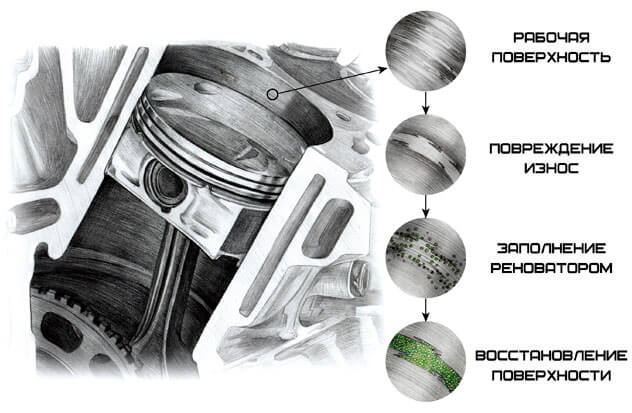

Существующие сегодня присадки для уменьшения расхода масла будут действенными только в том случае, если маслосъемные кольца еще не окончательно стерлись. Поэтому если данная присадка не оказала никакого положительного эффекта лучше заменить маслосъемные колпачки и забыть об этой проблеме.
Герметизирующие присадки для устранения течи масла в двигателе также заслуживают внимания, так как они позволяют устранить мелкие дефекты резиновых деталей. Такие добавки используются для моторных масел и для АКПП. Присадки этого типа обладают также антиокислительными свойствами.
Несмотря на свою, казалось бы, пользу, некоторые компоненты обладают и отрицательными свойствами.
Минусы присадок для моторного масла
При использовании присадок для масла, некоторые их компоненты могут привести к следующим отрицательным воздействиям на систему:
- Реметаллизаторы могут снизить подвижность поршневых колец, а также увеличить окислительные свойства смазывающего состава.
- Антифрикционные компоненты увеличивают температуру газа в цилиндре, а фторосодержащие частицы тефлона, находящиеся в области горения, могут привести к образованию ядовитого фосгена.
- Средства, содержащие измельченный силикат магния, приводят к потере температурной стабильности, в результате чего расход масла не уменьшается а, наоборот, увеличивается.
- Слоистые добавки (дисульфит молибдена, тантала, вольфрама, титана и нитрид бора) приводят к распаду дисульфита, в результате, образуется серная кислота. Детали мотора становятся подвержены образованию коррозии.
- Современные нанодобавки приводят к потере стабильности моторного масла, а также могут обладать прочими, пока неизвестными негативными свойствами.
В заключении
Как видите, присадки могут оказать как положительное, так и негативное влияние на двигатель, поэтому при их выборе старайтесь не перебарщивать. Если ваш автомобиль находится в исправном состоянии, вы используете моторное масло одной фирмы и уверены в его качестве, то дополнительные компоненты вам не нужны. Если автомобиль прошел немало километров и его «здоровье» вызывает опасения, то качественные, а главное, правильно подобранные присадки позволяю продлить срок эксплуатации машины.
Большая часть разговоров о моторных маслах вращается вокруг базового компонента, но современные масла содержат гораздо больше.
Добавки, которые присутствуют во всех маслах, принято называть присадками. Нельзя путать такие добавки с готовыми присадками, которые можно приобрести во многих магазинах.
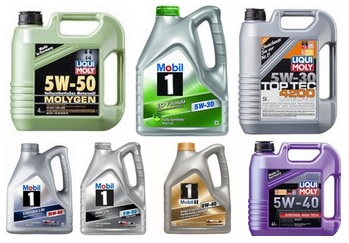
Итак, изначально моторное масло помимо базового компонента имеет :
Омолаживающие добавки (ингибиторы окисления)
При более высоких температурах молекулы масла вступают в реакцию с кислородом. Поверхностный металл действует как катализатор для таких реакций.
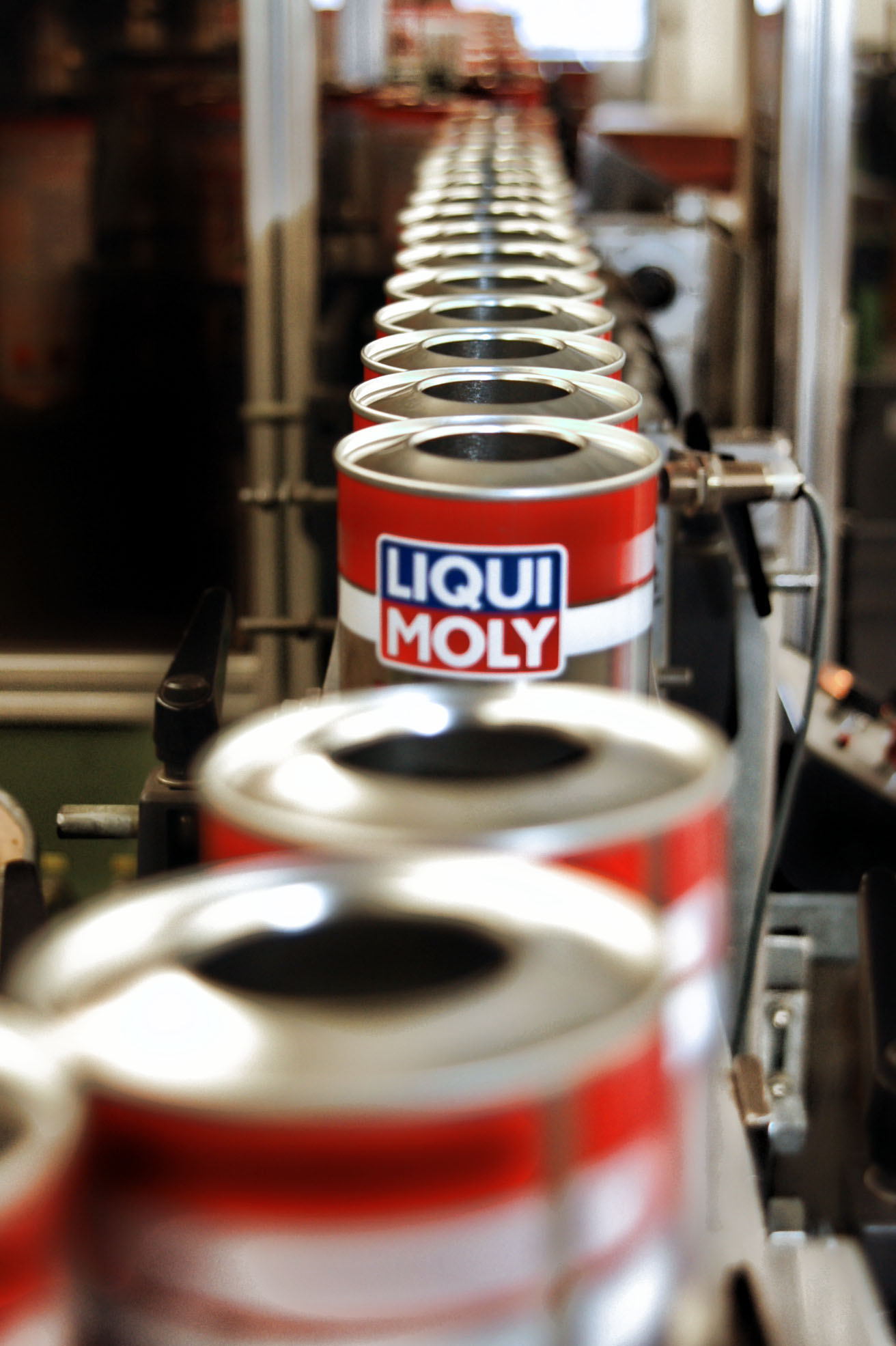
Результатами старения масла являются:
Увеличение вязкости (загустение масла)
Формирование отложений (кокс, шлам и т.д.)
Коррозия в результате образовавшихся кислот
Включение антиоксидантов в состав смазочных материалов помогает может замедлить, а иногда и избежать эти эффекты.
В качестве ингибиторов окисления выступают: азот, фосфор и соединения на основе серы (амины, фенолы вместе с цинком, кальций и т.д.).
Моющие и диспергирующие добавки
Задача этих добавок, препятствовать коагуляции (объединению маленьких частиц ) нерастворимых остатков(таких как смолы и битум),и таким образом бороться с шламовыми отложениями и уплотнению масла. Кроме того, эти добавки нейтрализуют кислоты.
Добавки могут иногда включать сукцинимиды, нейтральный металл сульфо-координат, Феноляты, фосфаты, тиофосфаты, полимерные моющие средства, амины, сульфонаты, высокомолекулярную органическую известь, свинец и соли цинка.
Противоизносные присадки
Используются для увеличения несущей способности и уменьшения износа в местах повышенного трения (кулачки, зубья шестерни, толкатели и т.д.). Они формируют защитный слой на металлических поверхностях деталей и позволяет металлическим поверхностям скользить без износа за счет снижения трения.
Используется присадки: дифосфат цинка, диалкил-трикрезилфосфат, органические фосфаты, а также сера и соединения азота.
Индексные присадки
Эти вещества (растворимые в масле полимеры), улучшают вязкостно-температурные свойства минеральных масел, т.е. они уменьшить влияние температуры на вязкость. При низких
температурах, улучшают характеристики тякучести , а при высоких температурах увеличивают вязкость.
Используемые добавки: полиметакрилатах (PMA), стирол-бутадиен-сополимеры (SBC).
Присадки снижающие точку тягучести
При изготовлении масел, которые при снижении температуры становятся ещё более вязкими (вызвано кристаллизацией молекул парафинов ) включают добавки:
полиметакрилат, алкил-фенолы, нафталин с хлорированными парафинами, пропилена, сополимеры и т.д.
Пеногасители
Полисиликоны , полиэтиленгликоль эфиров и т.д. применяются для снижения пенообразования, вызванного вспениванием. Избыток вспенивания (воздушно-масляной смеси) может привести к недостаточному смазыванию деталей.
Модификаторы трения
Это поверхностно-активные вещества, используемые при изготовлении масел, служат для уменьшения коэффициента трения между металлическими поверхностями- жирные кислоты, органические амины, амины фосфатов и т.д.
Из всего вышесказанного можно сделать вывод, что эти добавки являются чрезвычайно важными компонентами в маслах и качество пакета присадок является одним из важных условий, для сохранения «здоровья» мотора автомобиля.
____________________________________________
Интересно почитать:
Как очистить двигатель от нагара
Для чего нужна промывка двигателя или достаточно ли замены масла для Вашего автомобиля
Как определить некачественный бензин
Преимущества синтетических масел перед минеральными
Как выбрать хорошую присадку в топливо
В этой статье мы рассмотрим, чем хороши и чем плохи присадки в моторном масле. Кроме того, мы узнаем мнение эксперта по этому поводу. После ее прочтения мы будете знать больше об этих препаратах. «Как?» — спросите вы, дочитайте статью до конца, и вы все узнаете.

Важно правильно ухаживать за масляной системой автомобиля. Но мало водителей думают о пользе или вреде присадок. Но все же много людей сходятся во мнении, что применять их нужно и полезно. Давайте выясним почему.
Может достаточно только масла?
Производители двигателей еще на стадии разработки проводят испытания смазочного материала на проекте. Так, например, Американский институт нефти (API), перед выпуском в серию, переговаривают условия с производителем двигателей. Какая вязкость, какой пакет присадок, уровень зольности, в случае с дизельным мотором — все важно. Получается, что стандартного масла достаточно для нормальной работы мотора.
Любое масло уже содержит присадки.
Приходя в магазин, вы замечаете гамму масел, подходящих под ваши спецификации. С этой ситуацией сталкивались многие. Обилие присадок в них настолько широко и разнообразно, что водитель очень часто входит в ступор при выборе смазочных материалов. Как бы то ни было, запомните, что какое бы вы масло не взяли, залив его вы обеспечите оптимальную работу деталям. Любое масло уже содержит все необходимые добавки.
Что входит в стандартный пакет?
- Моющие присадки
Работают по загрязнениям, очищая поверхность цилиндров и трубопроводов.
- Диспергаторы (активные добавки, препятствующие слипанию частиц носителя)
Диспергаторы работают совместно с моющими средствами, чтобы дать маслам способность принимать примеси частиц (например, грязь или сажу в двигателе). Также убирает их из масляной пленки, чтобы они не наносили повреждений.
- Антиокислители
Огромный пласт присадок, который нейтрализует образующиеся в двигателе кислоты. Без них эти кислоты могут вызвать коррозию и повреждение двигателя.
- Модификатор трения
Помогает маслу претерпевать резкие повышения давления на узлах двигателя.
- Модификатор вязкости
Позволяют сохранять рабочую вязкость масла в широком диапазоне температур. Прекрасно работает совместно с модификатором трения, гася чрезмерное увеличение давления.
Если покупать, то что?
Прежде чем бежать в магазин со своими кровными для начала надо рассмотреть какие есть присадки и какие нужно применять в вашем случае. Средств много, поэтому давайте по порядку рассмотрим каждое.
Модификаторы трения и стабилизаторы.
Эксперт, на вопрос: «Что такого в особенного в этих присадках?» ответит, что тут нас ждет выбор. «Что вы хотите: повышенный расход топлива или улучшенные свойства вязкости?
Выбрав что-то одно, вы приобретете другое». Люди утверждают, что модификаторы увеличивают расход топлива в среднем на 5%, и это логично.
Если вязкость масла увеличивается давление по системе тоже увеличится. Это в свою очередь увеличит нагрузку на поршень, следовательно, затрат на преодоление сопротивления будет больше, значит топлива тратиться будет больше.
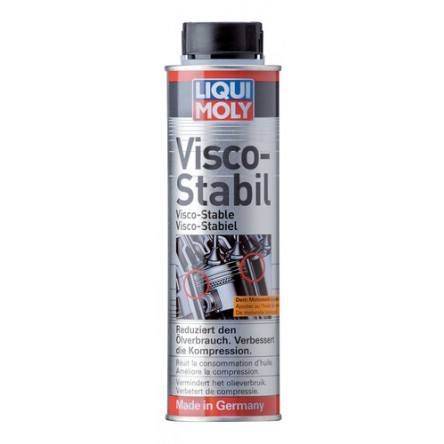
Но порой стабилизаторы необходимы, иначе при утечках и угарах моторного масла возможно масляное голодание, нагар на деталях, распад и окисел.
Присадки против износа
Суть этих средств проста, как дважды два. Они должны тонким слоем покрыть поверхность детали, сделать ее «излишне скользкой».
В качестве основы используются жидкие парафины, способные не просто смазать узел, но и охладить его. Раньше для этих целей использовался тефлон – самый скользкий материал, но как известно к нему на смену пришел молиген, молибден и керамическая основа.
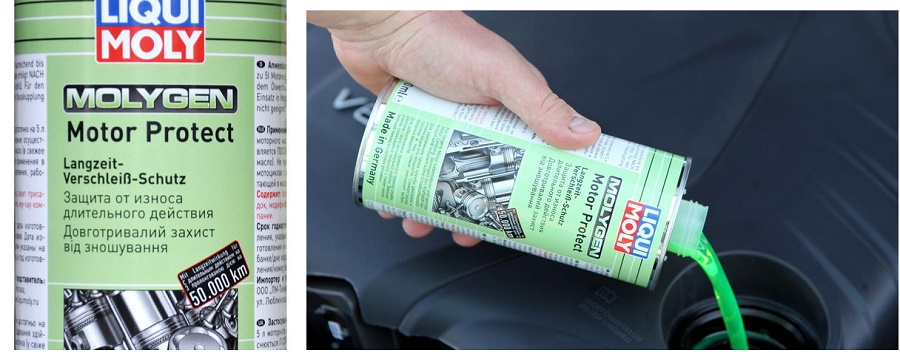
Имейте в виду, что не все присадки приносят много пользу, даже наоборот иногда они приносят ненужные хлопоты.
Несмотря на то, что мы очень часто проводили тесты с данными продуктами в экстремальных условиях, мы все же не имеем возможности провести всестороннее исследование. Такие испытание может произвести только завод-изготовитель.
По этой причине мы не можем точно сказать: присадки – это хорошо или плохо.
Но мы дадим вам очень хороший совет не гонитесь за добавками, которые могут увеличить срок службы моторного масла.
Никто не спорит, что чистое моторное масло, подходящее к «отработке», лучше грязного.
Вы можете действительно увеличить пробег, но, никогда не покупайте присадку только потому, что вам нужен только лишь увеличенный пробег.
Используйте добавки в масло только большими временными промежутками, они помогут базовому моторному маслу работать максимально хорошо.
Не забывайте следить за периодом замены масла. Никакая присадка к маслу не сможет преодолеть неряшливые методы обслуживания.
Надеюсь, мы развеяли для вас многие вопросы. Помните, что ухоженный автомобиль – безопасный автомобиль.
Присадки в масло двигателя: лить или нет?
Присадки в масло и топливо активно добавляют ещё на стадии производства, причём в больших количествах. Но в сложных условиях работы или для решения проблем с двигателем автовладельцы используют дополнительные присадки. Кто-то хочет снизить расход топлива или увеличить срок службы масла, кому-то требуется почистить мотор от нагара и сажи, устранить масляную течь или сизый дым из выхлопной трубы… С помощью современных автомобильных присадок можно решить почти любую задачу. Вот десять характерных примеров.

Присадки в масло
Как быстро промыть двигатель? Моющие присадки
Моющие присадки-пятиминутки стали популярной и эффективной альтернативой промывочным маслам. Традиционное промывочное масло нужно заливать и сливать отдельно, что увеличивает и продолжительность, и стоимость работ. Моющая присадка заметно упрощает процесс: залитая в двигатель, она превращает старое масло в промывочное, эффективно очищая двигатель от грязи. После этого остаётся лишь сменить моторное масло на новое (конечно, не забыв и о масляном фильтре).
Помимо растворяющих грязь компонентов, моющие присадки содержат дисперсанты и детергенты — вещества, не дающие отложениям слипаться в крупные частицы и оседать на металле. Поэтому такая чистка безопасна для двигателя: вся отмытая сажа превращается в мелкую взвесь и удаляется вместе со старым маслом.

Как снизить расход топлива? Антифрикционные присадки
Двигатель внутреннего сгорания — механизм весьма неэффективный, несмотря на все усилия инженеров. Большая часть топлива тратится не на вращение колёс, а на преодоление механических потерь, половина из которых — потери на трение в самом двигателе. Поэтому даже небольшое уменьшение внутреннего сопротивления положительно влияет на расход топлива.
С трением эффективно борются антифрикционные присадки (модификаторы трения). Они не изменяют свойств масла, а делают более скользкими металлические поверхности в двигателе, поэтому их часто называют триботехническими составами, а не присадками. Наиболее известные примеры — средства с дисульфидом молибдена, графитом, эстерами, а также кондиционеры металла, образующие на поверхностях особую сервовитную плёнку, снижающую трение.
Тонкая плёнка исключает прямой контакт металлов в парах трения. Это не только снижает потери, но и делает работу двигателя заметно тише. Недостаток антифрикционных присадок — необходимость их регулярного использования, ведь со временем поверхностная плёнка стирается, и эффект исчезает. Поэтому модификаторы трения желательно добавлять при каждой смене масла.

Как увеличить ресурс двигателя? Противоизносные присадки
Улучшить защиту двигателя в тяжёлых условиях работы — задача противоизносных присадок. Они увеличивают адгезию масла, позволяя масляной плёнке лучше закрепляться на поверхности металла. Либо создают собственную защитную плёнку из металлокерамики или ПТФЭ (тефлона).
Например, по такому принципу работают популярные на Дальнем Востоке присадки Форум. Фторэтиленовый (ПТФЭ) порошок создаёт на трущихся поверхностях скользкое и прочное покрытие, защищающее металл от износа и коррозии. Такие присадки особенно эффективны в экстремальных условиях: при холодных зимних запусках, в предельных режимах работы двигателя, а также при потере давления масла (например, при повреждении картера).

Как продлить жизнь старому двигателю? Восстанавливающие присадки
С годами и пройденными километрами зазоры в парах трения увеличиваются; двигатель «ест» масло, теряет мощность и расходует много топлива. На капитальный ремонт решаются не все, но есть и «консервативная терапия» — комплексные восстанавливающие присадки.
В изношенном двигателе из-за прорыва горячих газов камеры сгорания в картер масло быстро окисляется, теряя свои свойства. Восстанавливающие присадки помогают снизить расход масла, защищая его с помощью ингибиторов окисления и стабилизируя вязкость. Повысить компрессию двигателя помогают раскоксовыватели, возвращающие подвижность поршневым кольцам. Комплексные присадки к маслу также содержат антикоррозионные добавки, связывающие влагу и защищающие металлические детали двигателя.

Как снизить дымность двигателя? Присадки «антидым»
Предательский сизый дым из глушителя сильно снижает рыночную стоимость машины. Причины могут быть разными: маслосъемные колпачки, залёгшие поршневые кольца, естественный износ цилиндров — вскрытие покажет, как говорят механики. Но не каждый автовладелец готов к полноценному ремонту: многие предпочитают продать машину, замаскировав неисправность. Не обсуждая этическую сторону вопроса, разберёмся с технической: как убрать сизый дым двигателя?
В основе всех антидымных присадок, которые часто заливают перед продажей машины — модификаторы вязкости (стабилизаторы). Не давая маслу разжижаться с ростом оборотов двигателя и температуры, они препятствуют его попаданию в цилиндры, а значит, снижают угар и дымность. К слову, на стабильно густом масле двигатель не только меньше коптит, но и тише работает.

Как устранить течь масла? Герметики масляной системы
Масляная течь двигателя обычно возникает из-за износа сальников — от постоянного контакта с горячим маслом резина даёт усадку. Замена уплотнений на новые — идеальный сценарий, но трудоёмкий и дорогой: иногда для смены сальника нужно разобрать половину двигателя. Масляные присадки «стоп-течь» — простая и дешёвая альтернатива ремонту.
Опасна ли присадка антитечь для двигателя? Это мнение довольно распространено среди автомобилистов. На самом деле, герметизирующие присадки — не герметики в привычном понимании. Они не заделывают «пробоины», а воздействуют только на резиновые детали, возвращая им исходный размер. С самим моторным маслом присадки «СтопТечь» не взаимодействуют, никак не меняя его свойств. Не влияет антитечь и на металлические детали, поэтому не поможет при механическом повреждении (например, микротрещине в блоке).
Восстанавливая размер и эластичность сальников, герметики масляной системы позволяют устранить течь масла малой кровью, без разбора двигателя. В автомобили с большим пробегом их советуют заливать даже для профилактики, не дожидаясь масляных капель под машиной.

Присадки в топливо
Как почистить топливную систему? Присадки-очистители
Грязное топливо — бич отечественных заправок. И речь не столько об обычной грязи, сколько о растворённой в топливе сере и некачественных присадках. Попадая в бак, всё это накапливается в топливной системе и оседает сажей в камере сгорания, нарастая на поршнях и клапанах. Результат — падение мощности, увеличение расхода топлива, перегрев двигателя и выход из строя каталитического нейтрализатора.
Очистить топливную систему можно с помощью присадок. Они эффективно растворяют отложения как в топливной магистрали, так и в камере сгорания, выступая в роли катализатора горения. Весь отмытый шлам безопасно сгорает в цилиндрах, не засоряя каталитический нейтрализатор. Результат — чистая топливная система и отсутствие нагара на поршнях и клапанах, а значит и правильная работа двигателя.
Из-за разных условий сгорания топлива очистители топливной системы для бензинового двигателя и для дизельного отличаются. Используйте присадку, подходящую именно для вашей машины.

Как вернуть мощность двигателя? Очистители инжекторов и форсунок
Давление в инжекторах и форсунках с развитием двигателей становится всё выше, как и требования к распылу топлива. Грязь в форсунках сводит на нет точный расчет инженеров: вместо топливного облака в цилиндры течёт «ручеёк», расход топлива резко увеличивается, а мощность падает.
Что делать, если форсунки льют топливо? Перед их снятием и дефектовкой стоит начать с чистящих присадок — варианта более безопасного, чем чистка форсунок ультразвуком (которая нередко нарушает герметичность игольчатого клапана). Промывка очистителем мягко удаляет с распылителя отложения и смолы, восстанавливая нормальный распыл топлива и мощность двигателя. Очистители для бензиновых инжекторов и для дизельных форсунок отличаются, что нужно учесть при выборе средства.
Перед применением очистителя инжекторов или форсунок внимательно прочитайте инструкцию. Большинство средств (например, очиститель инжекторов Rinkai) добавляются непосредственно в топливный бак, как обычная присадка. Но некоторые (промывка инжекторной системы WYNNS) требуют более сложной процедуры: отключения топливного насоса и подачи непосредственно в топливную рампу.
Как улучшить бензин? Октан-корректоры
Октановое число бензина характеризует его детонационную стойкость. Увы, на автозаправках оно не всегда соответствует заявленному. Езда на некондиционном бензине вызывает детонацию — взрывное горение, выводящее из строя свечи, кислородные датчики и катализаторы.
Если плохой бензин попал в бак, то лучшая «первая помощь» двигателю — октан-корректор. Такая присадка способна повысить октановое число бензина на несколько пунктов, сделав его пригодным для нормальной работы двигателя.
Стоит ли умышленно заливать бензин с меньшим октановым числом, повышая его самостоятельно с помощью октан-корректора? Вопрос дискуссионный. При заправке полного бака топлива разница в цене между 92 и 95 бензинами примерно соответствует стоимости бутылька октан-корректора. А качество топлива с заправки и «самостоятельно приготовленного» объективно сравнить можно только в лаборатории.

Как улучшить дизтопливо? Цетан-корректоры
Среди характеристик дизельного топлива нет октанового числа, зато есть цетановое — показатель воспламеняемости. Чем оно выше, тем лучше и полнее сгорает топливная смесь. Как и в случае с октаном бензина, цетановое число солярки на АЗС далеко не всегда соответствует заявленному. И автомобилистам приходится повышать его самостоятельно с помощью цетан-корректоров.
Обычно цетан-корректоры объединяют в одном флаконе с другими присадками для дизтоплива — очищающими и смазывающими. Такие комплексные присадки улучшают не только цетановое число топлива, но и смазывающую способность, что важно для плунжеров топливного насоса.
Присадки к маслам — что это? Что дают самые спорные препараты автохимии? В теорию вопроса углубился профессор Александр Шабанов.
01
Ехидная усмешка рекламы любит прятаться за обилием обещаний и заумностью формулировок. Типичный пример — автохимия: напустить тумана здесь проще простого. Развеять его помогает классическая теория двигателей внутреннего сгорания (ДВС), которая прекрасно знает, на какие реальные эффекты можно надеяться.
На что обычно хочется повлиять среднему потребителю, изучающему витрину с препаратами? Пожалуй, на мощность и динамику автомобиля. Да еще на расход топлива. А возможно ли такое теоретически? И если да, то как этот эффект получить? И неплохо бы знать, насколько существенным он может быть, чтобы заранее не готовиться к чудесам.
ИНФОРМАЦИЯ К РАЗМЫШЛЕНИЮ
Берем литр топлива и сжигаем его в двигателе. Какая часть этого литра принесет нам пользу, а какая пропадет зря? Иными словами, чему равен коэффициент полезного действия?
Материалы по теме
Самыми совершенными и эффективными являются тяжелые малооборотные судовые дизели с цилиндрами больших диаметров. Там из каждого литра топлива на пользу идет до 520–540 миллилитров. Остальное греет воздух (вместе с отработавшими газами и охлаждающей жидкостью), а также крутит насосы и агрегаты. Совсем небольшая часть (не больше 10–20 мл) не сгорает, а потому портит атмосферу. Чем миниатюрнее двигатель и чем выше обороты, тем меньше топлива идет в толк. В одноцилиндровом бензиновом движке бензопилы или газонокосилки из литра бензина толково используется всего 150–200 мл. Автомобильные двигатели — где-то посередине.
В реальности всё гораздо хуже, чем на стенде. К примеру, едем мы в пятницу из города (читай: стоим в пробке). Мотор крутится на холостых, качество сгорания никудышное. Из того же литра бензина не сгорит 80–100 мл: сказывается плохое качество газообмена, а вместе с ним и сгорания — из-за сильно прикрытой дроссельной заслонки. А все остальное топливо идет на обеспечение жизни мотора, нам от него не достается ничего — разве что в виде холодного потока от кондиционера. Иными словами, эффективная мощность, а также эффективный и механический КПД вообще равны нулю, поскольку машина не движется. При увеличении подачи топлива мощность растет, а с ней и оба этих КПД. Но в любом случае механический КПД при номинальной частоте вращения коленчатого вала и полной нагрузке не поднимается выше 0,75 для высокооборотного двигателя и 0,90–0,92 для малооборотного. А в среднем для автомобильного мотора в режимах городского цикла он составит 0,35–0,50.
Итак, мы, во‑первых, сжигаем не всё, что льем в цилиндры. Во‑вторых, слишком много расходуем на обеспечение функционирования мотора, то есть на механические потери.
Пути повышения эффективности ДВС очевидны: нужно повысить полноту сгорания и снизить непроизводительные потери. На качество сгорания присадки точно не влияют. А на потери?
КПД
Степень совершенства двигателя и процессов, происходящих в нем, наиболее полно характеризует так называемый эффективный КПД. Это произведение двух других коэффициентов полезного действия: индикаторного, который, условно говоря, отвечает за качество того, чтó и как горит, — и механического, который поясняет, сколько топлива сжигается только для обеспечения жизни самого двигателя. Ведь необходимо компенсировать то трение, которое обязательно присутствует в узлах, обеспечить работу механизма газораспределения, насосов, генератора, без которых двигатель не может функционировать.
02
1. Так выглядела поверхность первого поршневого кольца изрядно побитого жизнью мотора до обработки (увеличение в 64 раза)… 2 …а так — после того, как двигатель прошел полную обработку препаратом на базе ГМТ.1. Так выглядела поверхность первого поршневого кольца изрядно побитого жизнью мотора до обработки (увеличение в 64 раза)… 2 …а так — после того, как двигатель прошел полную обработку препаратом на базе ГМТ.
КРИЗИСНЫЙ МЕНЕДЖЕР
Механические потери, съедающие львиную долю топлива, состоят из нескольких слагаемых. Потери на привод механизма газораспределения плюс расходы на масляный и топливный насосы, помпу системы охлаждения, генератор и привод крыльчатки вентилятора, а также на мощность, необходимую для осуществления процесса газообмена, —это так называемые насосные потери. Всё остальное (от 50 до 80%) — потери на преодоление сил трения в двигателе. Вот с трением как раз и борются триботехнические составы.

